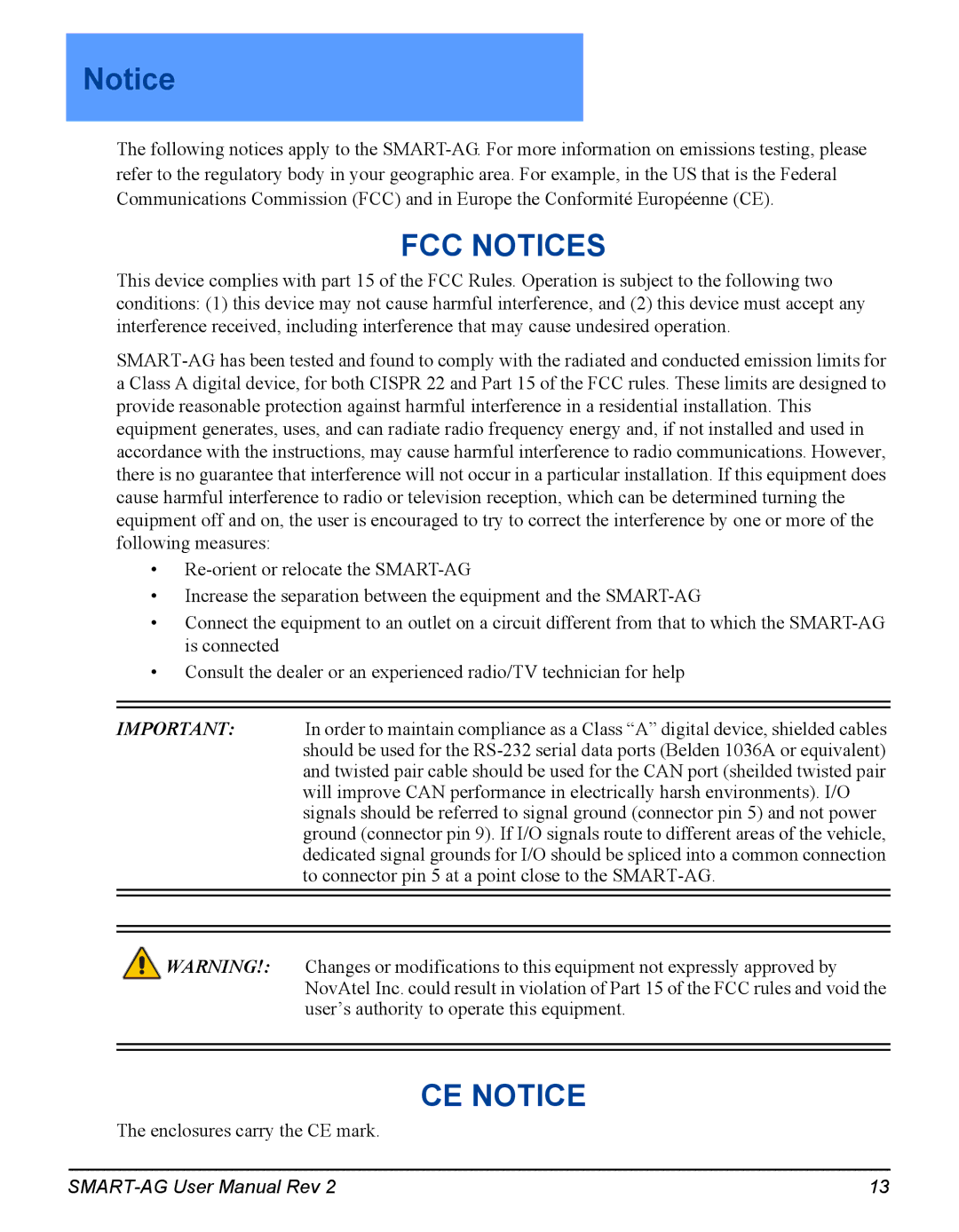Notice
The following notices apply to the SMART-AG. For more information on emissions testing, please refer to the regulatory body in your geographic area. For example, in the US that is the Federal Communications Commission (FCC) and in Europe the Conformité Européenne (CE).
FCC NOTICES
This device complies with part 15 of the FCC Rules. Operation is subject to the following two conditions: (1) this device may not cause harmful interference, and (2) this device must accept any interference received, including interference that may cause undesired operation.
SMART-AG has been tested and found to comply with the radiated and conducted emission limits for a Class A digital device, for both CISPR 22 and Part 15 of the FCC rules. These limits are designed to provide reasonable protection against harmful interference in a residential installation. This equipment generates, uses, and can radiate radio frequency energy and, if not installed and used in accordance with the instructions, may cause harmful interference to radio communications. However, there is no guarantee that interference will not occur in a particular installation. If this equipment does cause harmful interference to radio or television reception, which can be determined turning the equipment off and on, the user is encouraged to try to correct the interference by one or more of the following measures:
•Re-orient or relocate the SMART-AG
•Increase the separation between the equipment and the SMART-AG
•Connect the equipment to an outlet on a circuit different from that to which the SMART-AG is connected
•Consult the dealer or an experienced radio/TV technician for help
IMPORTANT: In order to maintain compliance as a Class “A” digital device, shielded cables should be used for the RS-232 serial data ports (Belden 1036A or equivalent) and twisted pair cable should be used for the CAN port (sheilded twisted pair will improve CAN performance in electrically harsh environments). I/O signals should be referred to signal ground (connector pin 5) and not power ground (connector pin 9). If I/O signals route to different areas of the vehicle, dedicated signal grounds for I/O should be spliced into a common connection to connector pin 5 at a point close to the SMART-AG.
 WARNING!: Changes or modifications to this equipment not expressly approved by NovAtel Inc. could result in violation of Part 15 of the FCC rules and void the user’s authority to operate this equipment.
WARNING!: Changes or modifications to this equipment not expressly approved by NovAtel Inc. could result in violation of Part 15 of the FCC rules and void the user’s authority to operate this equipment.
CE NOTICE
The enclosures carry the CE mark.

![]() WARNING!: Changes or modifications to this equipment not expressly approved by NovAtel Inc. could result in violation of Part 15 of the FCC rules and void the user’s authority to operate this equipment.
WARNING!: Changes or modifications to this equipment not expressly approved by NovAtel Inc. could result in violation of Part 15 of the FCC rules and void the user’s authority to operate this equipment.